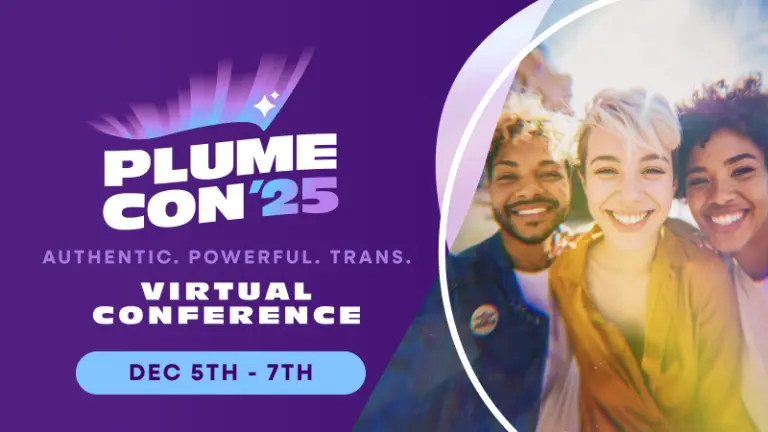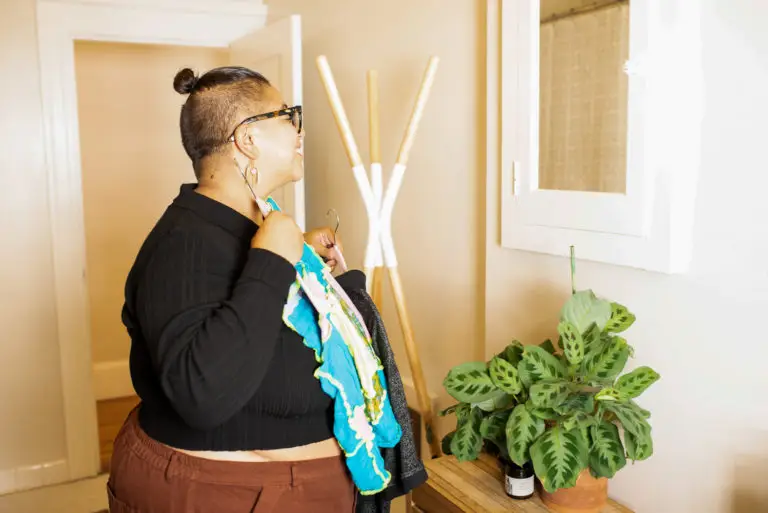Finding yourself is a lifelong journey for many people. As we grow and change, we interact with gender differently. New self-awareness could transform how we understand our gender identity or gender expression, or seeing someone who reflects an identity we never knew was possible. But finding a label for the person we are—our most authentic, truest self—can pose a challenge. This blog explains what gender diversity really means, and how it applies to healthcare. The blog also includes some common questions and words for genders, gender identity, and gender terms.
One of the biggest questions anyone can have is, “Who am I?” For those of us who are outside the gender binary and/or are transgender, that question can have a complicated answer. There are many terms and names for different types of genders and gender presentations. Gender is understood as a spectrum that includes female, feminine, male, masculine, nonbinary, agender, bigender, genderfluid, and more. Yet, how could one word possibly capture the complex and deeply personal meaning of someone’s identity?
We understand that gender is both complicated and intimate. Expressing the way you feel with one small word may seem simplistic. Those of us who have transitioned—that is, altered the way we present ourselves and how we move through the world—know that even “small” words have power.
How do you relate to the gender that was assigned to you at birth?
The words we use to name identity often describe how someone relates to the gender they were assigned at birth. For example, when a baby is born, the people who are present usually say “it’s a boy!” or “it’s a girl!” This is based on the baby’s genitals, not their identity. If someone is assigned male at birth, they may abbreviate that as AMAB; someone assigned female at birth may name that as AFAB.
If the baby is cisgender, the gender assigned at birth will feel comfortable throughout their life. The child who is a “boy” will identify as male, use he/him pronouns, and live as a man. Children assumed to be “girls” at birth are cisgender if they identify as female, use she/her pronouns, and live as women. Cisgender people are treated as normal in our culture, though they are only one kind of normal! There are many ways to identify, and gender diversity is normal, too.
Transgender identity is another way of relating to the gender assigned at birth. Simply, it means that the assigned gender isn’t a fit. The baby who is a “boy” does not identify as male, doesn’t want to live as a man, and isn’t comfortable being perceived as a guy. While this may be very obvious from a young age—most trans people self-identify by the age of 5—it is also common to realize your identity later in life. Some of us come out as trans in our 50s, 60s, and 70s!
Coming into alignment with your true gender identity is a journey. It is an adventure, too. It might not happen in a straight line for all of us. It may not happen all at once. For example, if you haven’t transitioned (or don’t want to transition), you are still transgender. There is no finish line to cross. You are transgender when you understand yourself in that way.
Being nonbinary means finding your own path to your gender. It can take a lot of courage to claim your space. However, when you arrive at a place that feels right to you, you’ll know you’re home. Nonbinary people are often portrayed in the media by thin, white, masculine-of-center models. While some nonbinary people might look that way, our community is way more diverse. We are fat, colorful, racially diverse, curvy, wild, feminine, and untamed, too. Some nonbinary people identify as transmasculine or transfeminine, which is a different expression of traditional gender-related qualities. For example, a transmasc person may embrace a soft, caring masculinity.
Agender people reject the idea of gender. They may feel androgynous, use neopronouns, or use no pronouns at all. They do not identify with any gender, or they might see themselves as genderless. Some nonbinary people are also agender. (Yep, you get to make your own rules about your own gender identity!)
What types of genders change, evolve, or transform?
Gender non-conforming (GNC) people have existed in every culture throughout history. While some like to pretend that GNC people are “new,” nothing could be further from the truth. Gender non-conforming people exist. They are valid—and deserve to be treated with respect, on their own terms.
For some gender non-conforming people, gender markers (like their name and pronouns) might transform to reflect their fluid selves. Other GNC folks stand solidly outside the mainstream. They claim the right to express their gender in a way that feels true to them, not defined by anyone else.
The word genderqueer entered common use in 1995. “Genderqueer” is a broad term that can apply to many types of people, regardless of the way they look. It is a way of being, not an aesthetic. Genderqueer describes people whose gender can’t be categorized as strictly male or female or who may “queer”, that is modify our understanding of, gender norms. Nonbinary people might also identify as genderqueer. People who identify as androgynous, or butch or femme, or who are transgender men or women, might also describe themselves as genderqueer.
Some genderqueer people see themselves as having a combination of masculine and feminine characteristics. Other genderqueer people don’t identify with either; some identify as agender, anti-binary, or anti-gender.
For many people, gender is not a fixed or static element. Some genderqueer people are also genderfluid, which means that their identity changes over time. They may have “masc/masculine days” and “femme/feminine days” or use multiple sets of pronouns to reflect their relationship with their identity.
Why do some gender identities in our community have different names?
Gender diversity is important because it reminds us that gender is what we make it. We define gender, it doesn’t define us.
For example, while some people use the word “butch” to describe their gender expression, it can also be a gender identity. Butch is a nonbinary identity in itself; author Leslie Feinberg defined butchness as neither male nor female in the groundbreaking book Stone Butch Blues. In the Black community, stud is a Black lesbian identity or a Black nonbinary identity. The word stud reflects masculinity and power, and is exclusive to Black people.
The feminine nonbinary is sometimes called femme, which is kind of like the counterpart to butch. (Butch/femme relationships and stud/fem relationships are frequently represented in the media.) Again, “femme” can be understood as a gender expression by some people; “high femme” could mean feminine drag, extremely styled hair and makeup, or mannerisms that are ultra-girly. Femme is also a gender identity. There are nonbinary femmes, transgender femmes, and genderfluid femmes!
Although there’s some misunderstanding around it, some Indigenous people use the term two-spirit to describe their identity. This term acknowledges the traditional belief that some people have both male and female spirits within them. Certain tribes and nations have their own names for these types of people, such as the Lakota winkte and the Navajo nadleeh. Non-indigenous people should not refer to themselves as two-spirit.
Intersex people are also part of the gender diverse community. People who are intersex are born with chromosomes or genitals that don’t match their sex assigned at birth. Being intersex isn’t about gender identity, gender expression, or sexual orientation. An intersex person may have female chromosomes but ambiguous to male-appearing genitals, or male chromosomes but ambiguous to female-appearing genitals. According to the Intersex Society of North America (ISNA), about 1 percent of the population is intersex or has intersex characteristics. Intersex people are more common than redheads!
What unique needs and goals do gender diverse people have?
Gender diverse people have unique healthcare needs because they haven’t historically been seen or served by traditional medicine. Gender diverse people need gender-affirming care, too. While not everyone who is gender diverse wants or needs to transition, some gender diverse, genderqueer and genderfluid people choose to use gender-affirming hormone therapy (GAHT). This is a personal decision; you are valid in your identity whether you make changes to your hormonal levels or not. At Plume, we offer the resources you need to make this important decision for yourself.
People who live outside the gender binary often feel frustrated when they seek care. Intake forms might not include relevant language, for example with limited pronoun options or questions that assume what kind of body or relationship a person might have. Providers may not be educated about what they need, for example when a trans man might need a pelvic exam. According to the Healthcare Coalition of Southern Oregon, even after a person has learned the language that describes them later in life, they will still often face discrimination from others who do not accept their identity.
Transgender, nonbinary and gender diverse people frequently don’t receive appropriate medical care. This is due to a combination of under-educated physicians, insurance coverage denials, discrimination, and fear of discrimination. This can cause several significant issues, such as:
- Physicians misdiagnosing or refusing to treat ailments suffered by transgender people
- Insurance companies not covering treatment
- Transgender people delaying or avoiding necessary health care, often to the point of putting their overall health at risk due to the above situations
OK, I came out. Do I have to change my pronouns?
Everyone’s gender identity comes with pronouns—or the absence of pronouns! Some people don’t use pronouns at all, while others use sets of pronouns such as she/her, they/he, zi/zir, and others. At Plume, we use inclusive pronouns and honor your identity so you can feel cared for and seen.
A new realization about your gender identity doesn’t always mean you want to change your pronouns. That’s normal, just like not every person wants to change their name. Whatever you decide, your choice should be honored. Research shows that respecting someone’s pronouns, which are part of their identity, decreases suicide risk by more than 50 percent. Feeling seen improves self esteem and can even save a life.
When compared with transgender, genderqueer, nonbinary, and gender non-conforming youth who aren’t able to use their chosen name and associated pronouns in any context, young people who can safely use their chosen name in all four key contexts (school, home, work and with friends) experience a significant improvement in health outcomes, including:
- 71 percent fewer symptoms of severe depression
- 34 percent decrease in reported thoughts of suicide
- 65 percent decrease in suicidal attempts
If you are debating whether to change your pronouns, name, or gender marker as a reflection of your identity—go for it! Try testing different pronouns with a trusted friend or within your community. You might also test out names that appeal to you. If this feels awkward, don’t worry about it. Many people feel uncomfortable asking to be treated with respect in the beginning. With practice, you will get very good at asking for what you need and identifying yourself.
Being gender diverse is unique and special—just like you! You never need to apologize for who you are. Take time to get to know yourself, learn what name and pronouns feel right, and explore what gender euphoria means to you. Each person has the power and responsibility of naming themselves. That means we have a beautiful rainbow of people—from nonbinary femmes and transmascs to he/him lesbians and trans butches. Gender diversity includes every imaginable combination of qualities, and it’s awesome to behold.
Wherever your gender journey takes you, Plume is here to be supportive. Reach out to learn more about how we can help you reach your transition goals and cheer you on as you answer life’s big questions about yourself.



